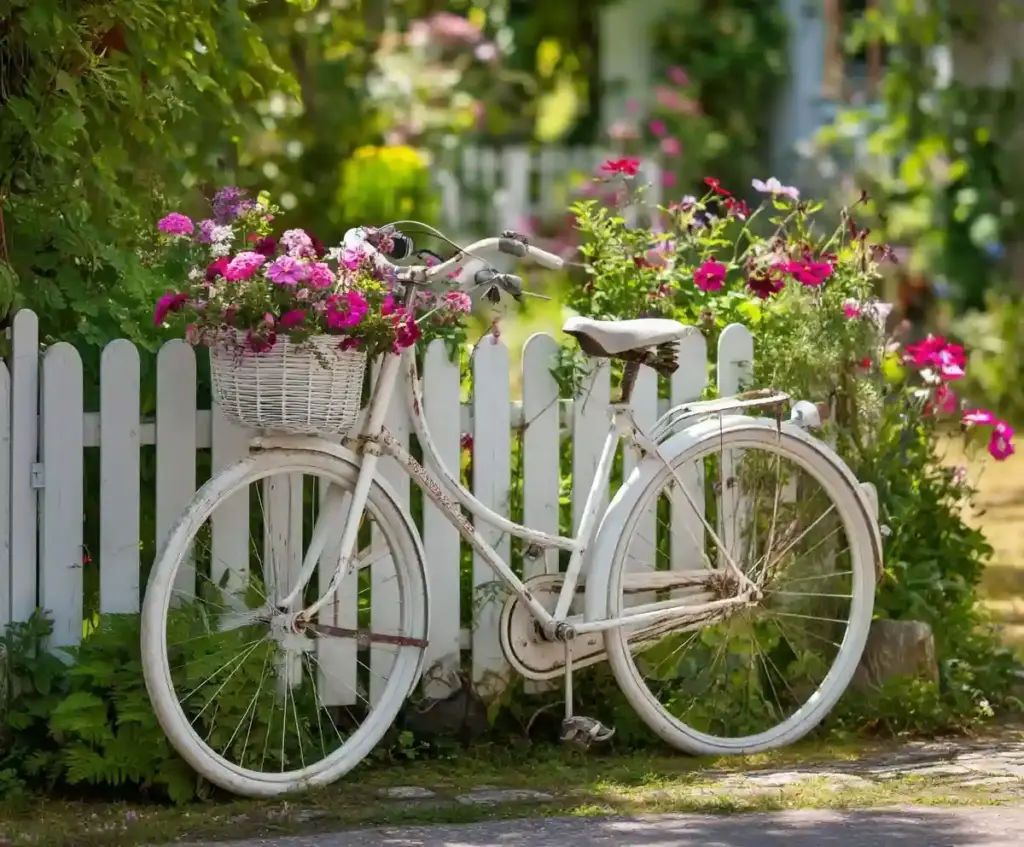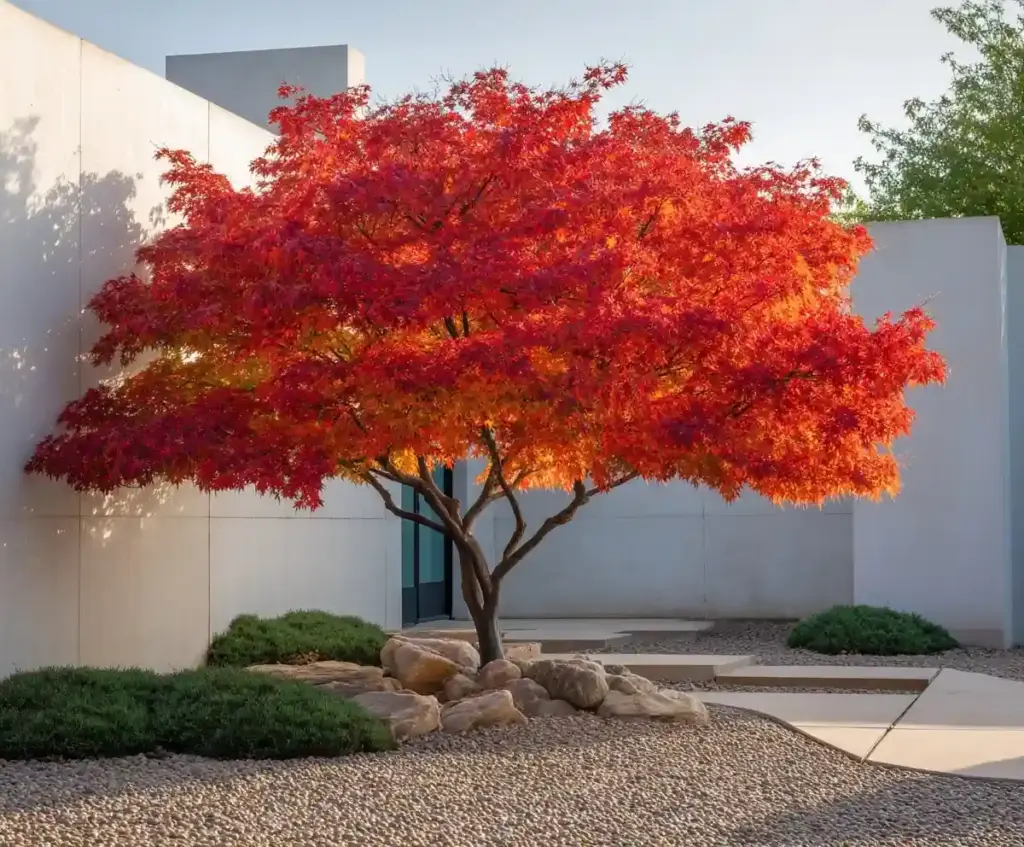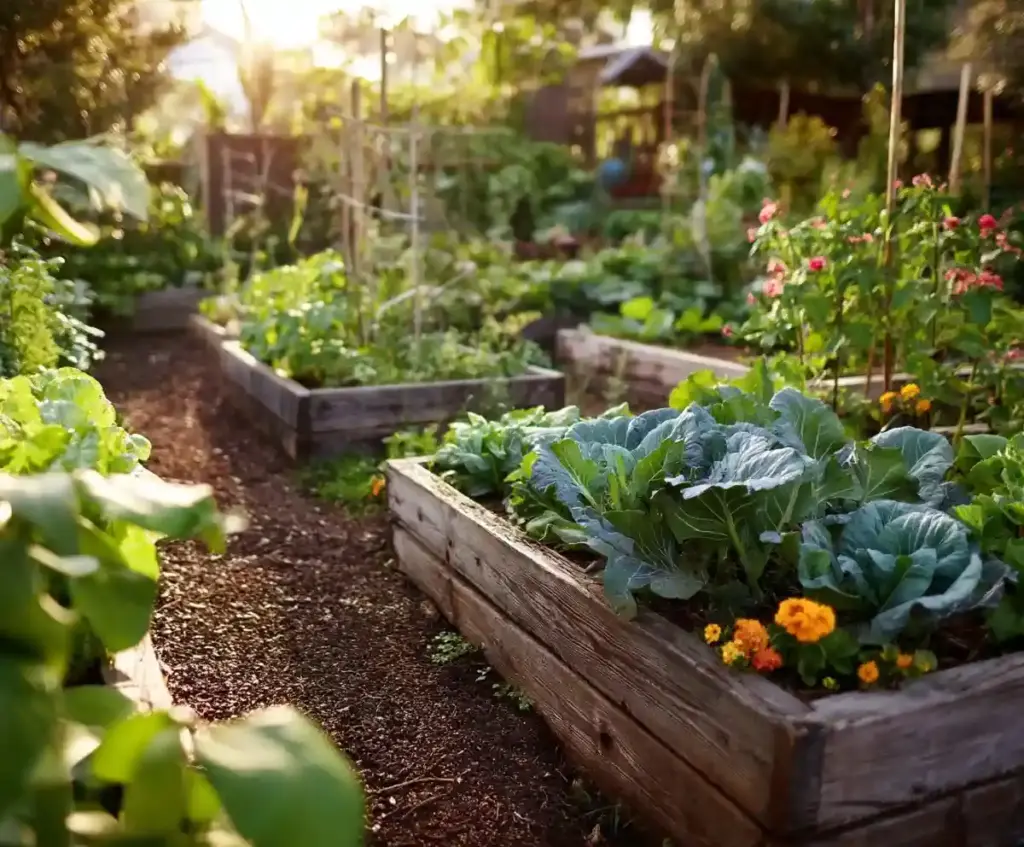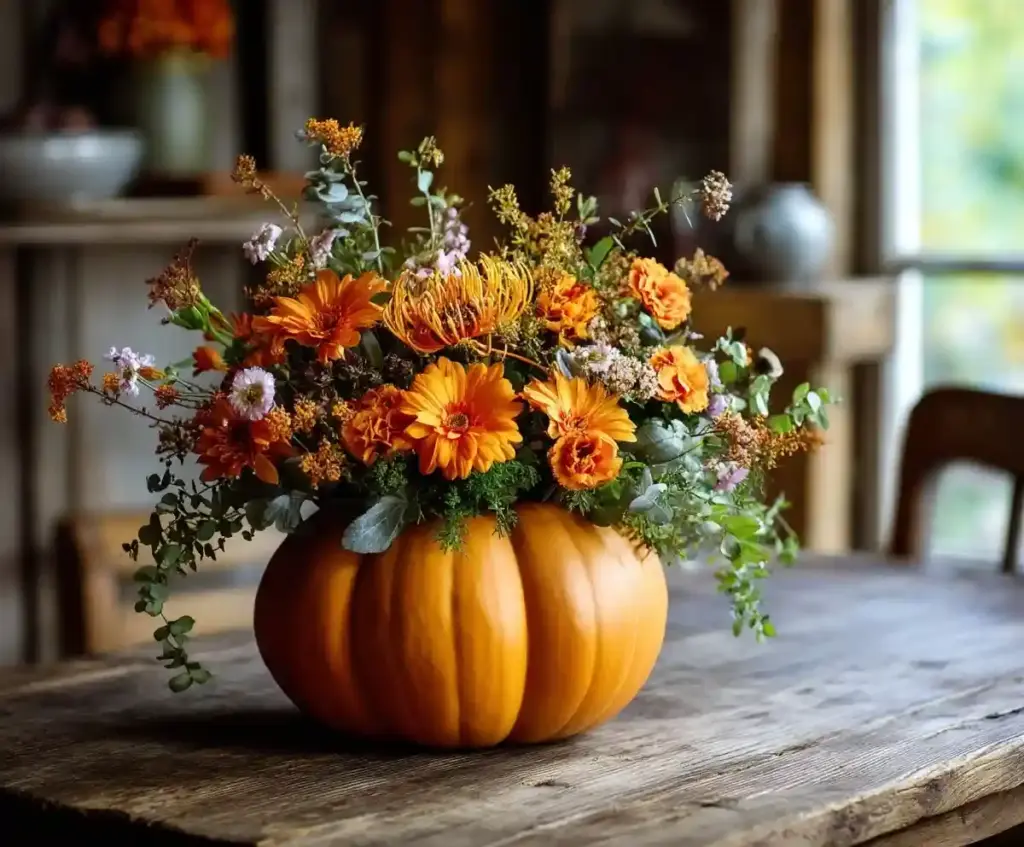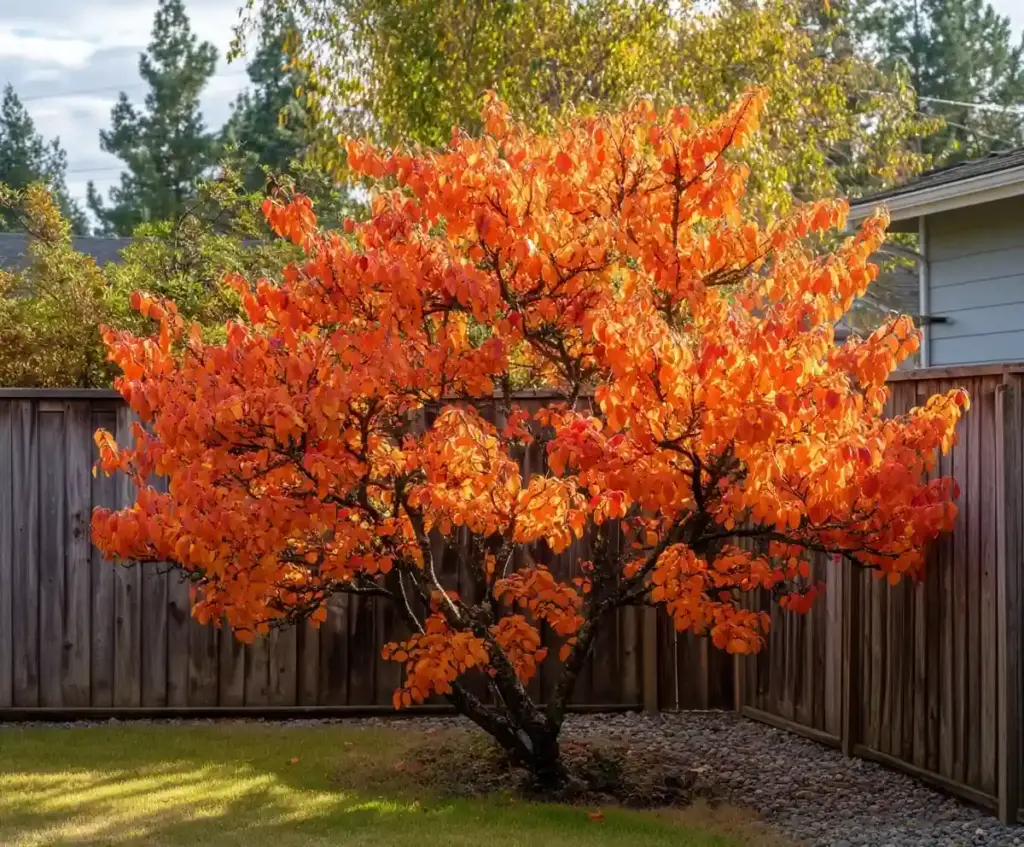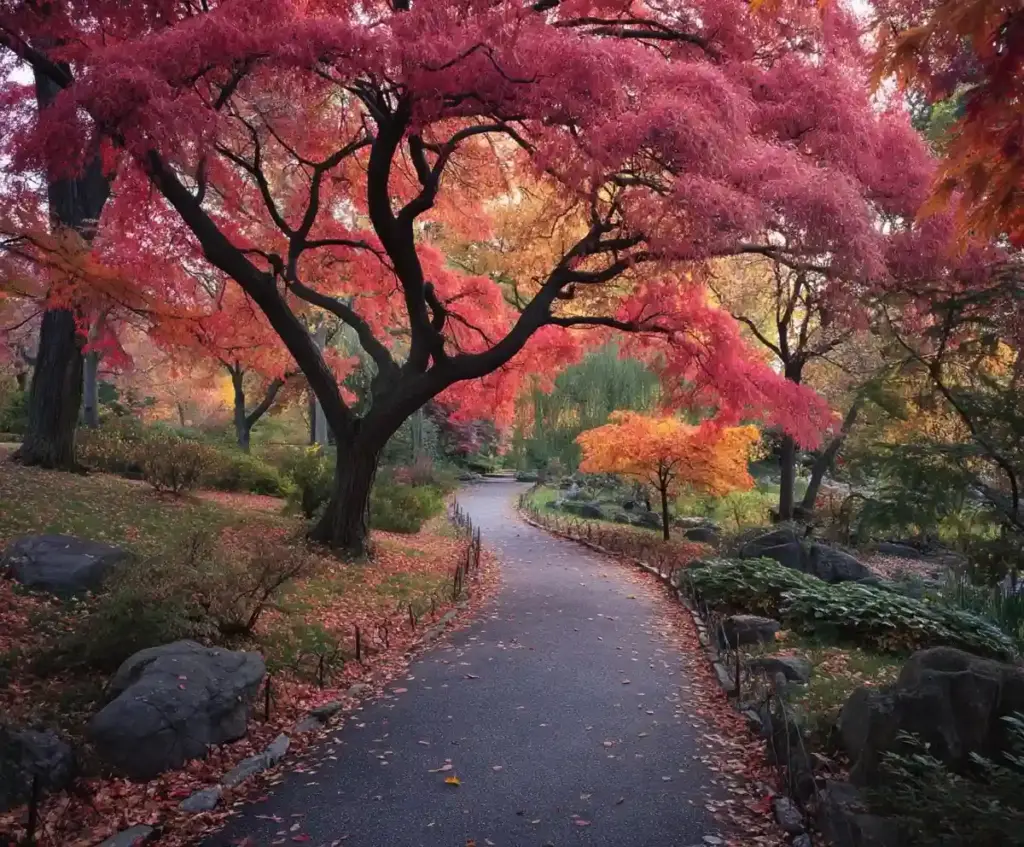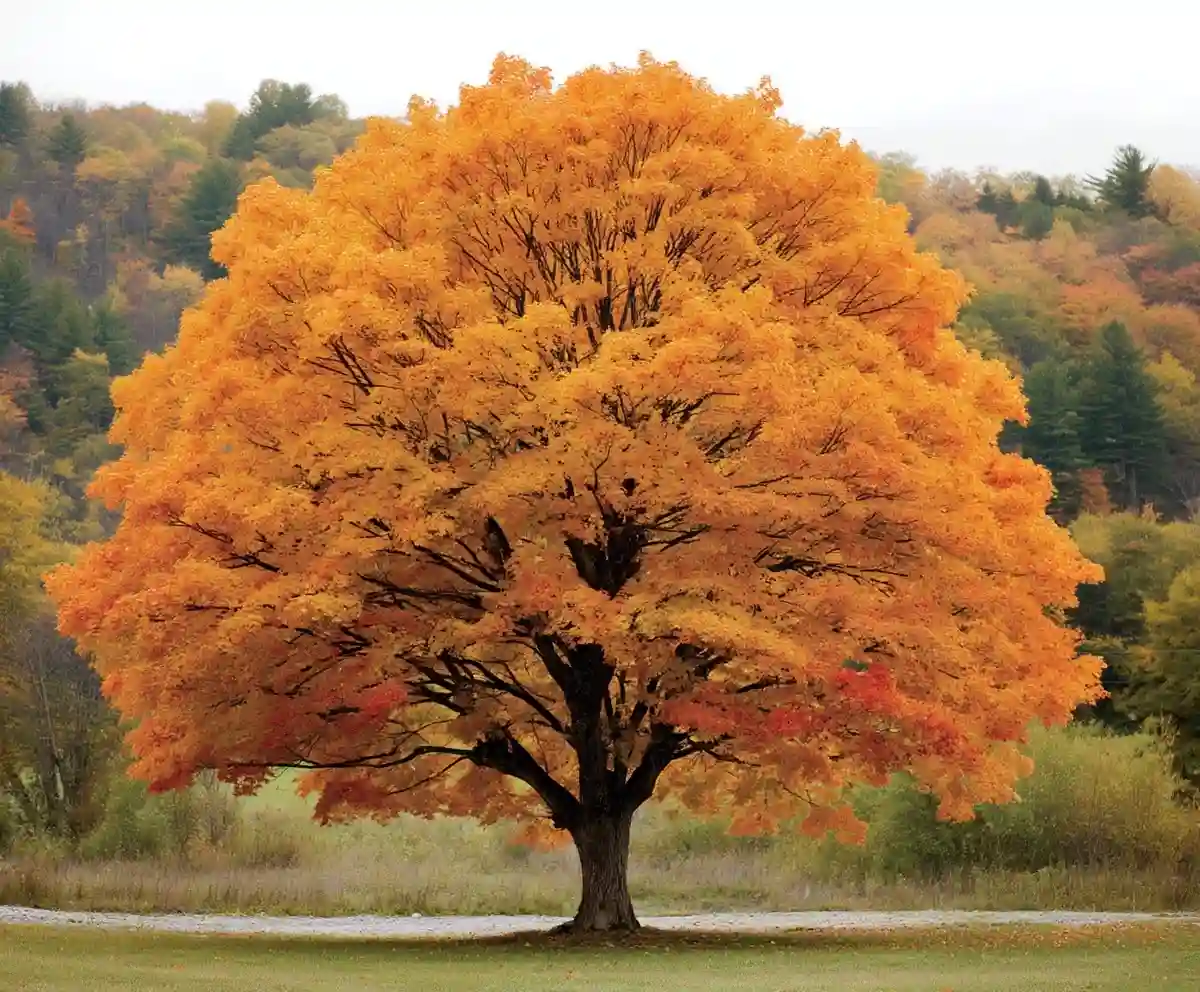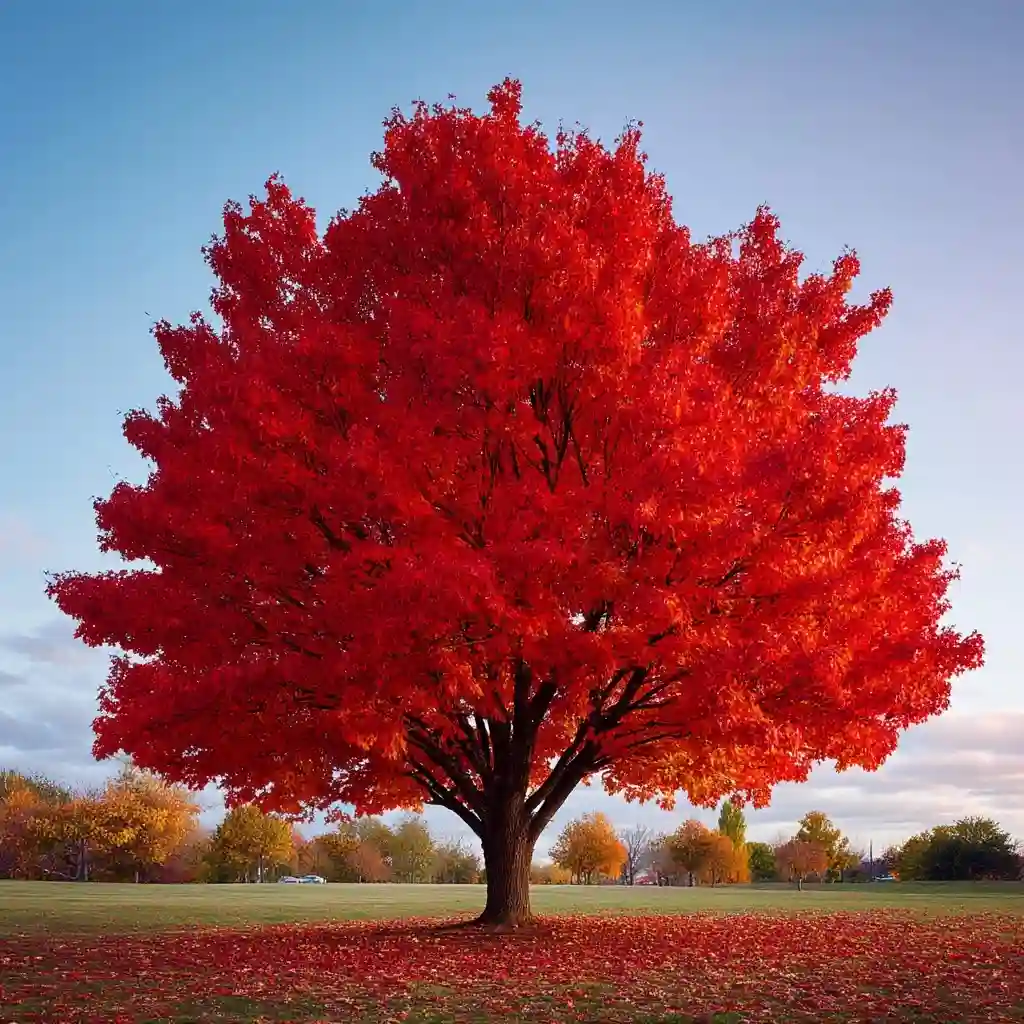Trees for fall foliage transform ordinary gardens and streetscapes into breathtaking scenes of seasonal color. As autumn approaches, certain trees put on dazzling displays of crimson, gold, orange, and purple that capture the essence of the season. Whether you’re planning a backyard refresh or simply love the vibrant transition of fall, adding these trees to your landscape can bring both beauty and ecological benefits. This curated guide features 13 stunning options known for their spectacular fall color, each offering unique traits that shine in the cooler months. Let’s discover the most eye-catching trees for fall foliage that turn any space into a seasonal masterpiece.
Table of Contents
1. Red Maple (Acer rubrum)
When thinking about trees for fall foliage, the Red Maple is one of the first that comes to mind. This classic favorite earns its name not just from its vibrant red fall color but also from the reddish hue of its buds and stems throughout the year.
Red Maples are widely admired for their fast growth, adaptability to different soil types, and ease of care. In autumn, their leaves turn brilliant shades of scarlet, orange-red, or even burgundy, depending on the climate and soil conditions.
They make an excellent choice for homeowners who want a show-stopping shade tree that performs well in both urban and rural settings. With a height of 40–70 feet at maturity, Red Maples also provide substantial canopy cover, perfect for cooling outdoor spaces.
Quick tips:
- USDA Zones: 3–9
- Best Location: Full sun to partial shade
- Soil Needs: Moist, slightly acidic, well-drained
This is a top-tier pick if you want a reliable and dazzling tree for fall foliage in nearly any region of the U.S.
2. Black Gum (Nyssa sylvatica)
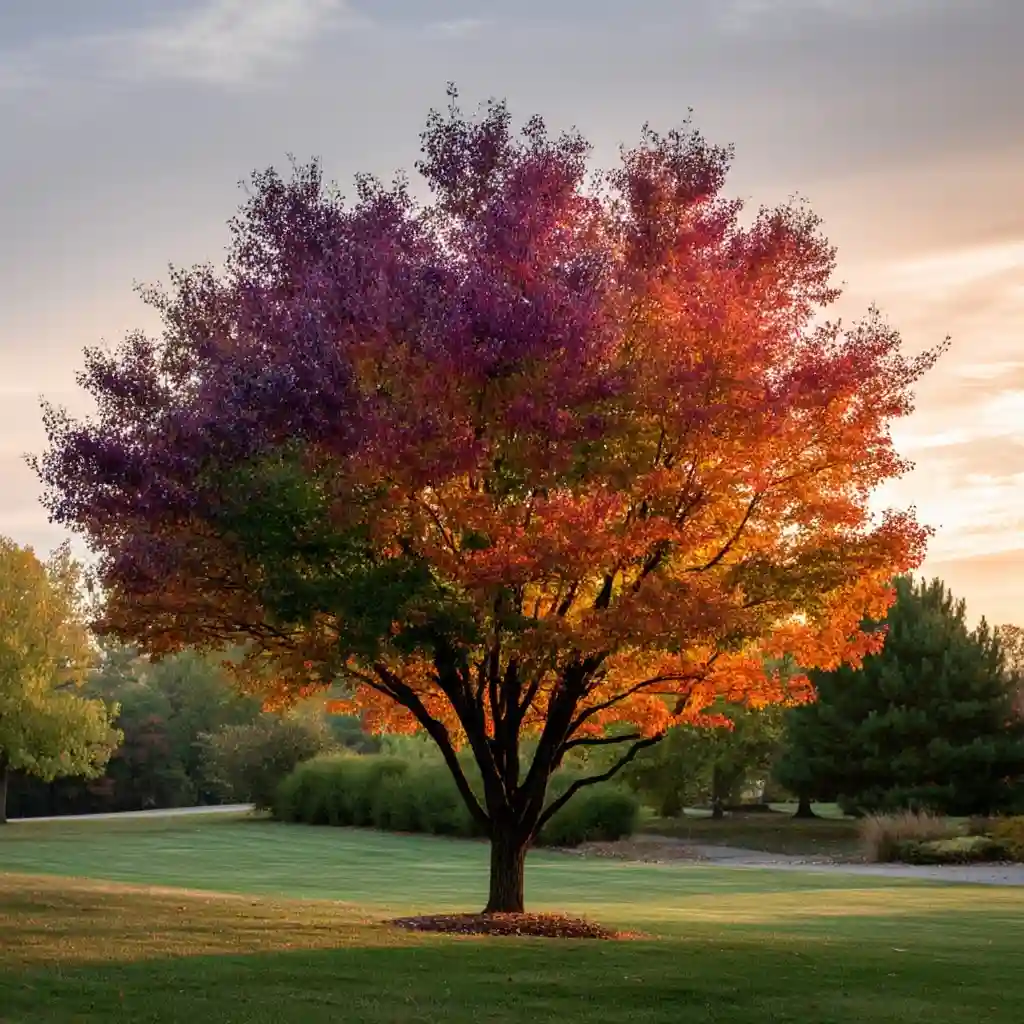
Black Gum, also known as Tupelo, is a hidden gem among trees for fall foliage. While it’s often underrated compared to more famous maples, Black Gum dazzles in autumn with a fiery palette of scarlet, orange, and purple—often on the same tree at once.
What sets Black Gum apart is its graceful, symmetrical form and glossy, dark green leaves that shift dramatically when the weather cools. This tree also supports pollinators in spring with small flowers and provides fruit for birds later in the season, making it a wildlife-friendly addition to any garden.
Though it grows more slowly than some other fall trees, its longevity and exceptional fall display make it well worth the wait.
Quick tips:
- USDA Zones: 4–9
- Best Location: Full sun to partial shade
- Soil Needs: Moist, acidic, well-drained
If you’re looking for a tree with multicolor fall interest and excellent ecological value, Black Gum is a standout choice.
3. Japanese Maple (Acer palmatum)
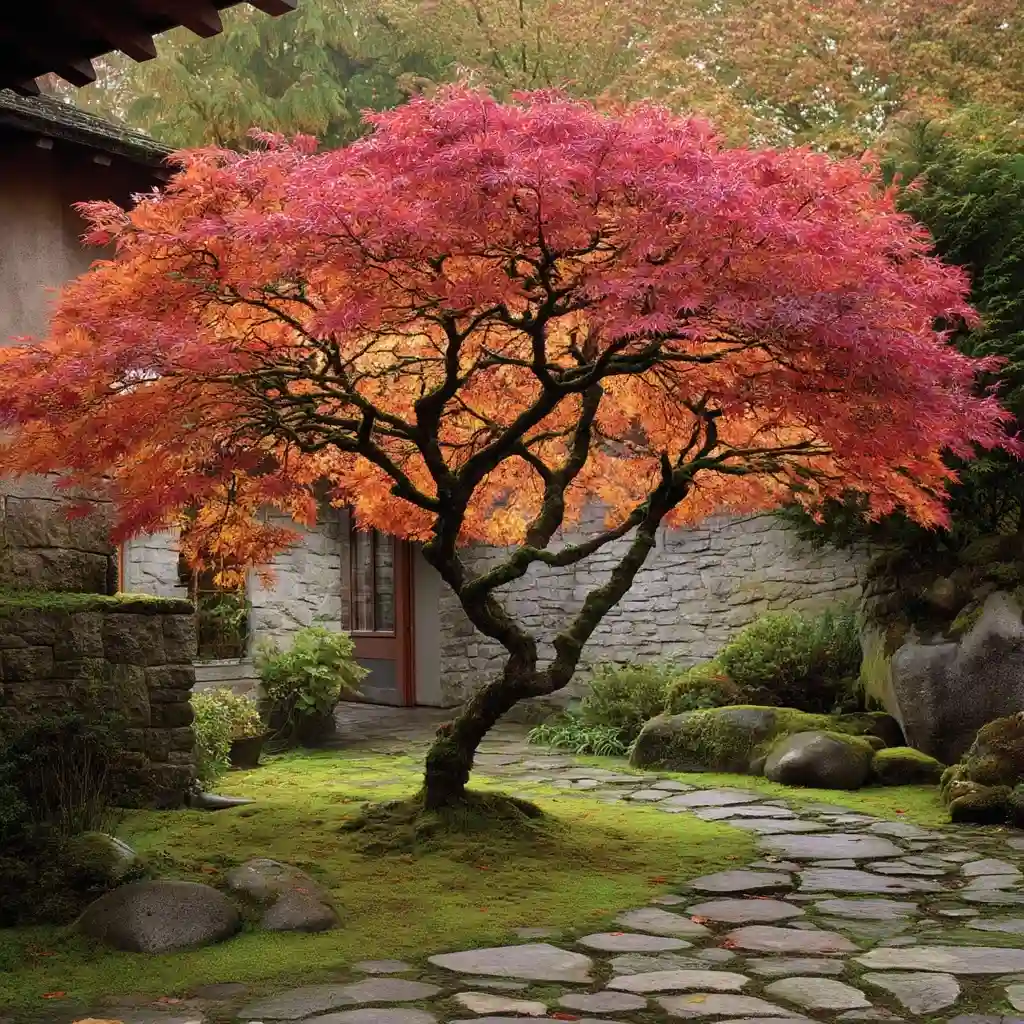
Few trees for fall foliage match the delicate beauty and elegance of the Japanese Maple. Known for their finely cut leaves and sculptural branching, these ornamental trees are cherished for the rich tapestry of colors they unveil in autumn—ranging from deep crimson to golden orange and fiery scarlet.
Japanese Maples come in a wide variety of cultivars, from compact dwarf types to medium-sized trees, making them perfect for everything from small patios to larger landscape features. Their slow growth and manageable size make them easy to care for, and they provide year-round visual interest with their attractive bark and graceful form.
While they prefer a bit of protection from harsh afternoon sun, their fall color performance in cooler climates is consistently spectacular.
Quick tips:
- USDA Zones: 5–8
- Best Location: Partial shade, especially in hot climates
- Soil Needs: Moist, well-drained, slightly acidic
Japanese Maples are an ideal choice if you’re seeking refined, vibrant fall color with a touch of artistry in your landscape.
4. Sugar Maple (Acer saccharum)
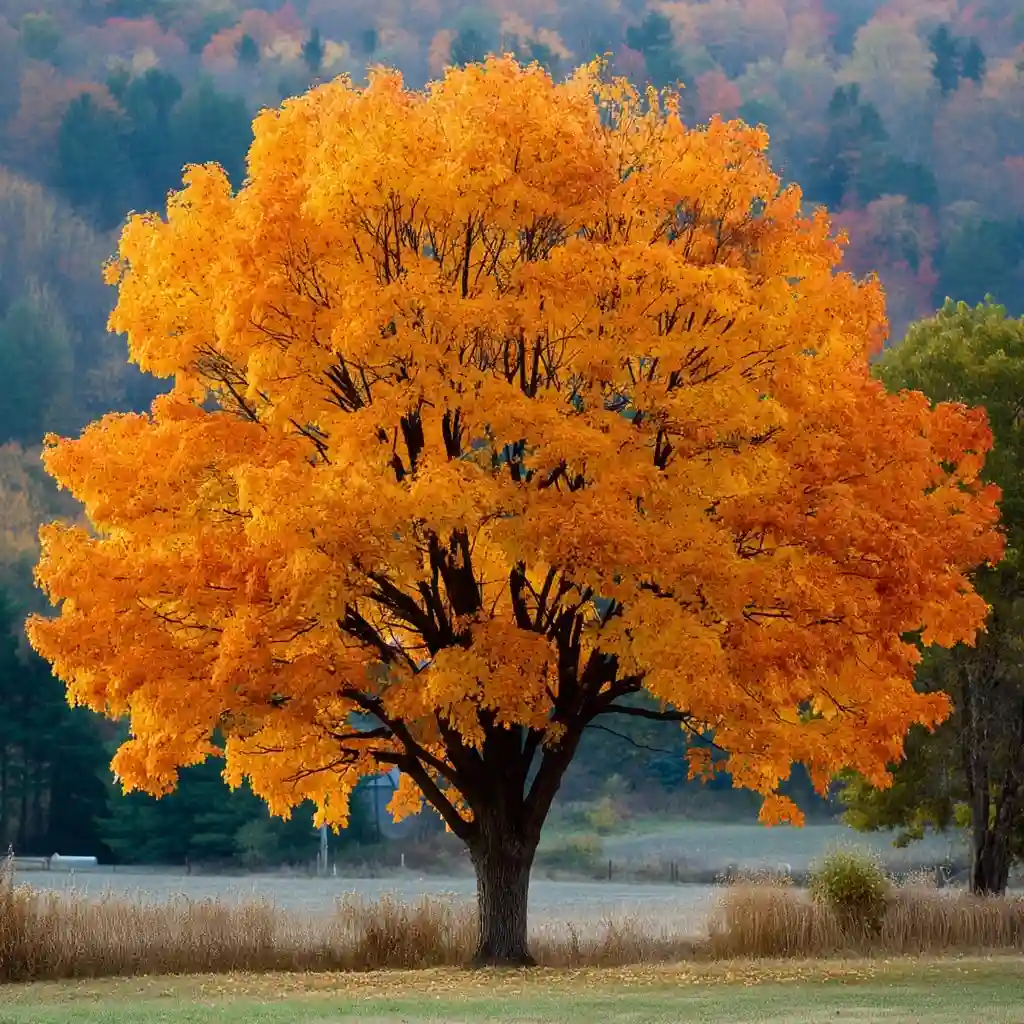
The Sugar Maple is a true icon among trees for fall foliage, and for good reason. Its brilliant display of fiery oranges, golden yellows, and deep reds defines the classic New England autumn and draws leaf-peepers from around the world.
Beyond its famous fall colors, the Sugar Maple is also valued for its role in maple syrup production. It’s a hardy, long-lived tree that thrives in a range of environments, provided the soil is well-draining and rich in nutrients.
With a mature height of 60–75 feet and a broad, rounded canopy, the Sugar Maple is ideal as a centerpiece tree in larger yards or as part of a wooded landscape. It also offers excellent shade during summer before transforming into a glowing beacon in the fall.
Quick tips:
- USDA Zones: 3–8
- Best Location: Full sun to partial shade
- Soil Needs: Moist, well-drained, slightly acidic to neutral
For anyone looking to make a bold fall statement, the Sugar Maple delivers timeless beauty and seasonal charm.
5. Sassafras (Sassafras albidum)
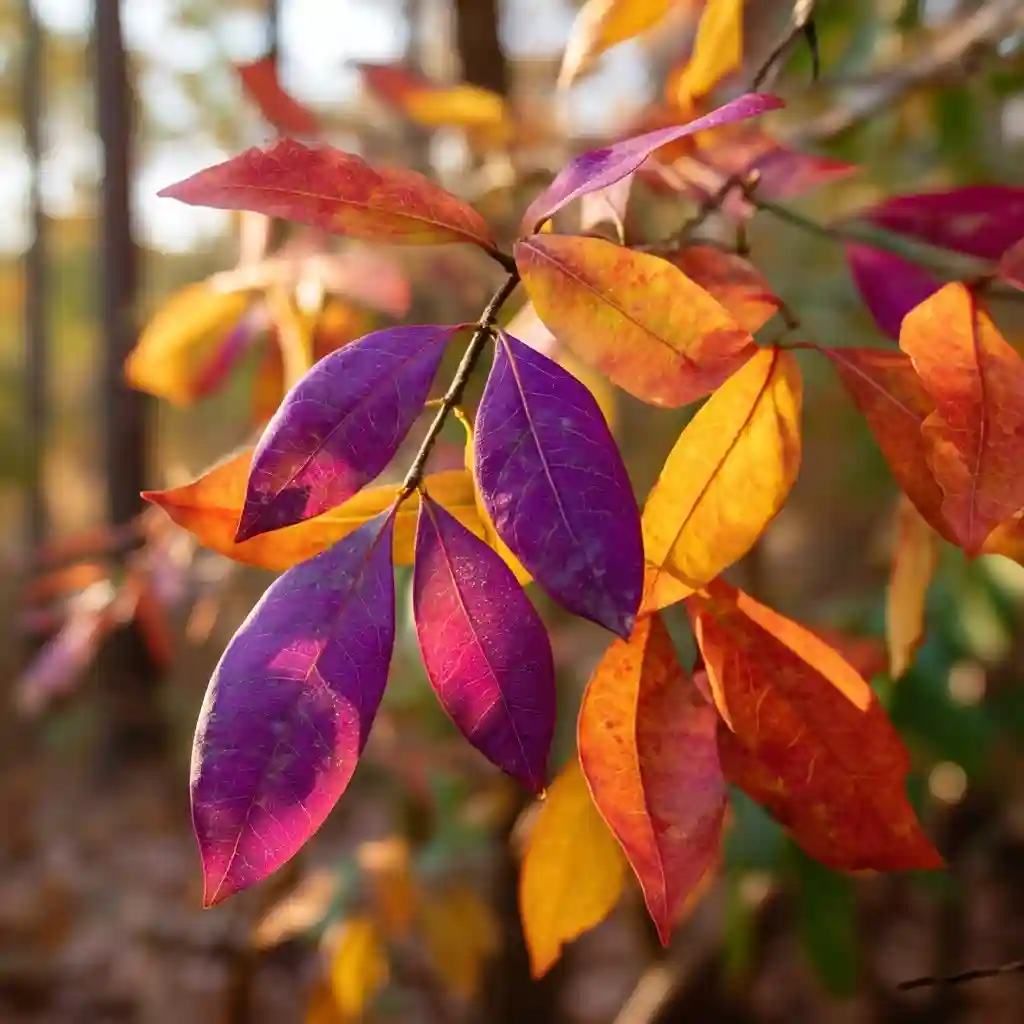
Among the more whimsical trees for fall foliage, Sassafras stands out with its uniquely shaped leaves—often appearing in three distinct forms on the same tree: mitten-shaped, three-lobed, and oval. Come autumn, these leaves ignite in a stunning blend of orange, yellow, red, and even hints of purple.
Native to eastern North America, Sassafras offers more than just beauty. Its roots and bark were historically used to make root beer, and it serves as an important habitat and food source for various wildlife species.
This medium-sized tree is a great fit for naturalized landscapes, woodland gardens, or as a seasonal accent tree. It prefers acidic soil and can tolerate partial shade, though full sun will encourage the most vibrant fall colors.
Quick tips:
- USDA Zones: 4–9
- Best Location: Full sun to partial shade
- Soil Needs: Well-drained, acidic, sandy or loamy
Sassafras is a fantastic option if you want multi-colored fall brilliance paired with interesting foliage and native plant benefits.
6. American Aspen (Populus tremuloides)
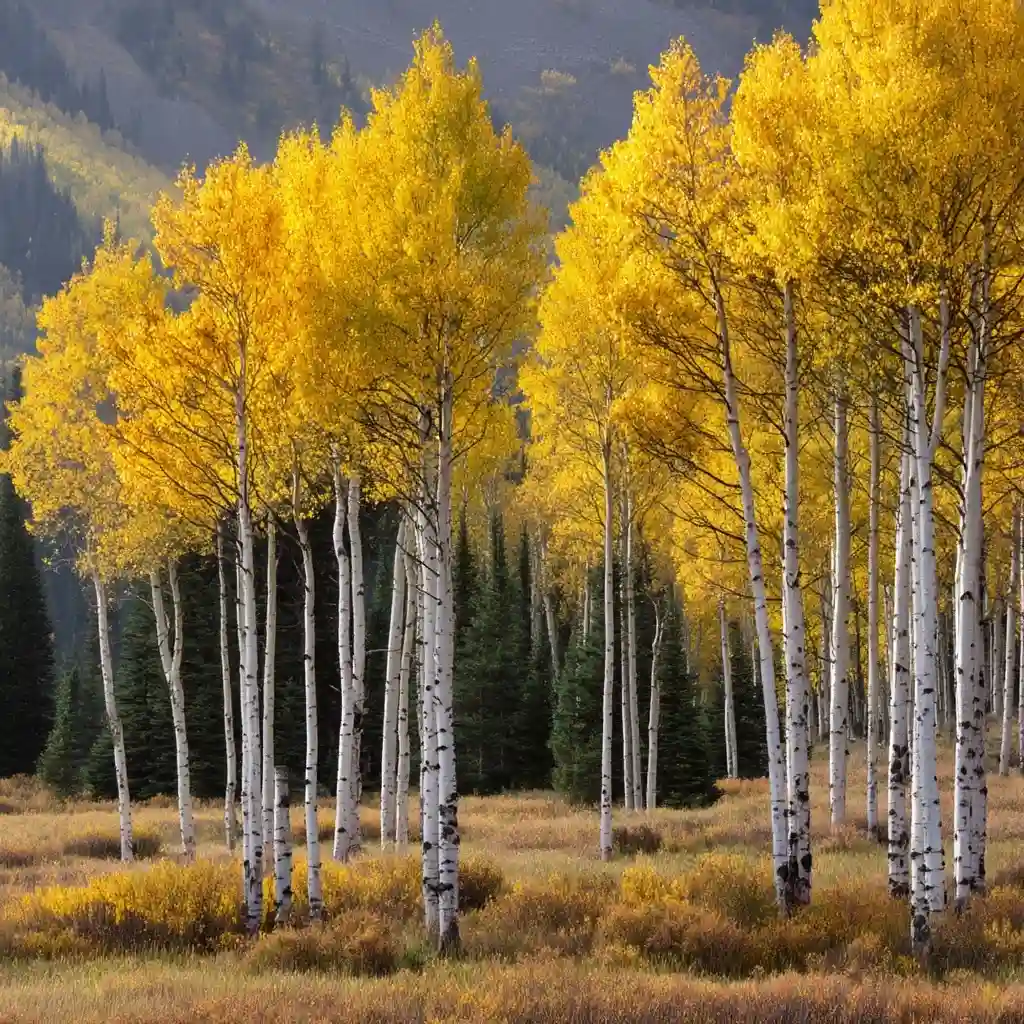
Known for its shimmering golden leaves and signature fluttering sound in the breeze, the American Aspen—also called Quaking Aspen—is one of the most striking trees for fall foliage in North America. Its bright yellow autumn display contrasts beautifully with its smooth white bark, creating a dramatic seasonal show.
Aspens are fast-growing and thrive in cooler climates. They’re particularly common in the Rocky Mountains and northern forests, often forming large colonies through their root systems. While they’re not ideal for small urban yards due to their spreading nature, they’re a perfect choice for open landscapes and naturalized areas.
The movement of their leaves, caused by flat stems that allow them to tremble in even the slightest wind, adds a unique dynamic visual element to fall gardens.
Quick tips:
- USDA Zones: 1–7
- Best Location: Full sun
- Soil Needs: Moist, well-drained, slightly acidic
For those with space and cooler temperatures, American Aspens provide golden fall color with unmatched elegance and energy.
7. Maidenhair Tree (Ginkgo biloba)
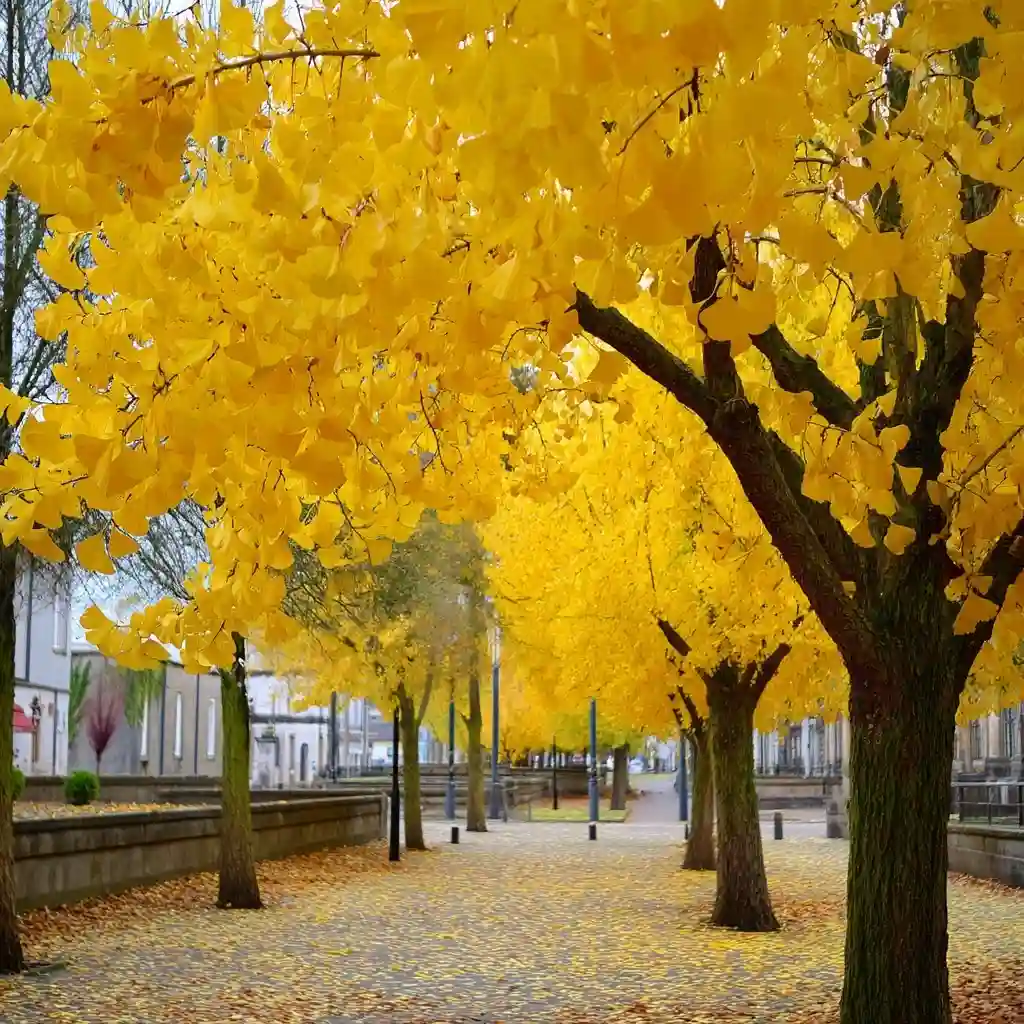
The Maidenhair Tree, commonly known as Ginkgo, is one of the most unique trees for fall foliage, both in appearance and history. As a living fossil dating back over 200 million years, the Ginkgo brings a timeless presence to any landscape.
Its fan-shaped leaves are unlike any other deciduous tree and turn a brilliant, uniform golden-yellow in fall. What makes the Ginkgo especially captivating is how it often drops all its leaves within a day or two once the peak color hits, creating a golden carpet beneath its canopy.
Ginkgos are extremely tolerant of urban conditions, including air pollution and compacted soil, making them excellent for city gardens. Male trees are typically preferred for landscape use to avoid the foul-smelling fruit produced by females.
Quick tips:
- USDA Zones: 3–8
- Best Location: Full sun
- Soil Needs: Adaptable; well-drained preferred
If you’re seeking a low-maintenance, high-impact tree with ancient beauty and bold fall color, the Maidenhair Tree is an unbeatable choice.
8. Tulip Tree (Liriodendron tulipifera)
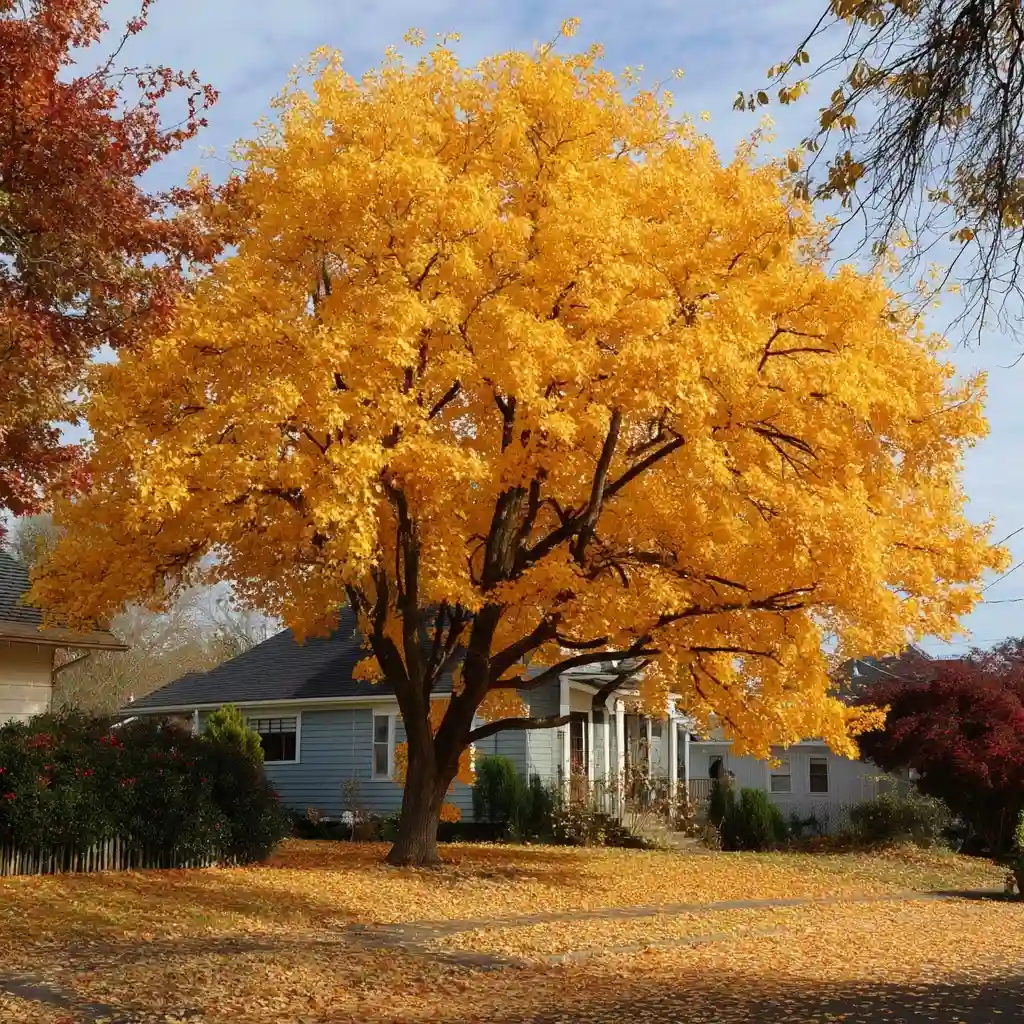
The Tulip Tree, also called Tulip Poplar or Yellow Poplar, is one of the tallest eastern hardwoods and a majestic addition to any list of trees for fall foliage. In autumn, its uniquely shaped, four-lobed leaves turn a bright, clear yellow that lights up landscapes like golden lanterns.
Despite its name, this tree isn’t related to true poplars or tulips. Instead, it’s a member of the magnolia family and produces distinctive tulip-shaped flowers in late spring—adding seasonal interest beyond fall.
Tulip Trees grow fast and straight, often reaching 70–100 feet in height, so they’re best suited for larger yards or open spaces. Their towering presence, symmetrical shape, and consistent fall color make them a showstopper in any landscape.
Quick tips:
- USDA Zones: 4–9
- Best Location: Full sun
- Soil Needs: Deep, moist, well-drained, slightly acidic
If you have the space and want a tree that offers both striking fall color and spring blooms, the Tulip Tree is an excellent all-season performer.
9. Sweet Gum (Liquidambar styraciflua)
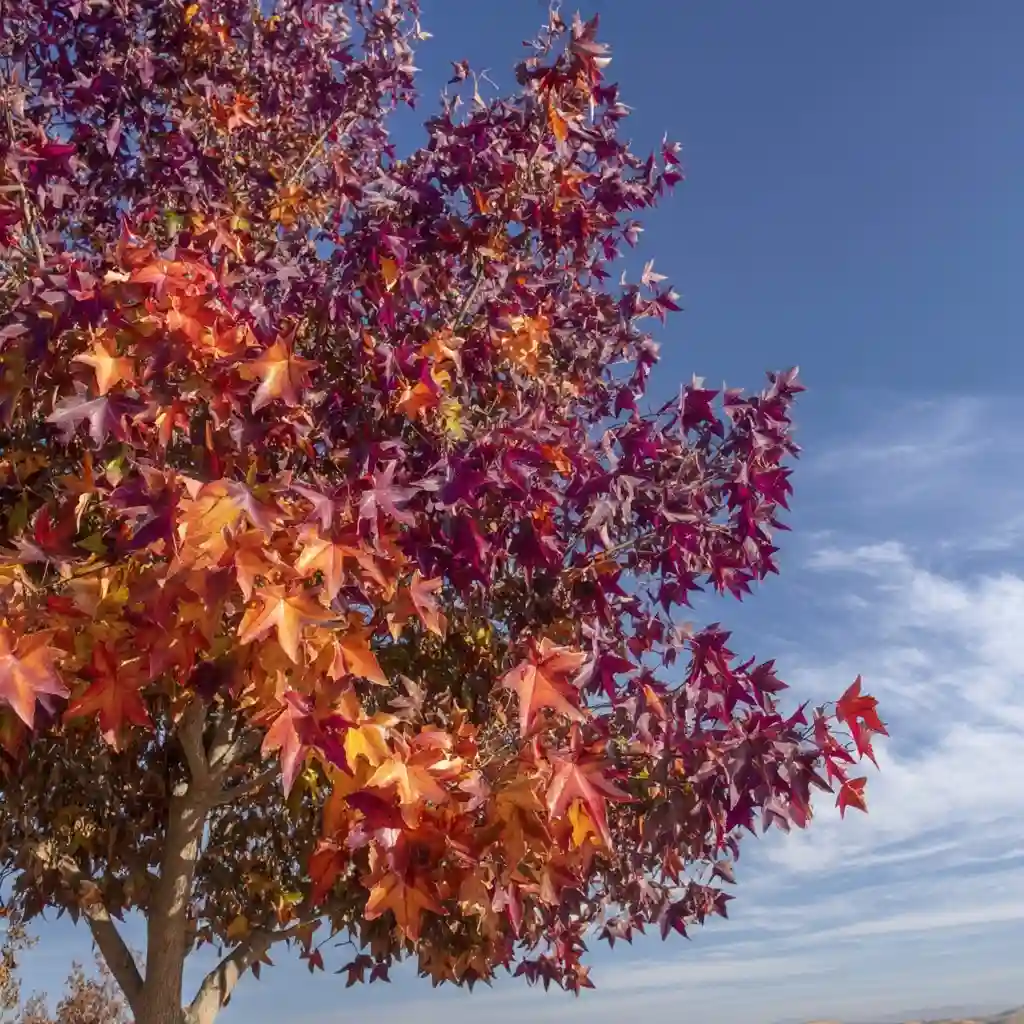
Sweet Gum trees are among the most kaleidoscopic trees for fall foliage, offering a stunning mix of burgundy, red, orange, and even deep purple—sometimes all on a single branch. Their five-pointed, star-shaped leaves add an extra layer of visual interest during the fall season.
Native to the southeastern U.S., Sweet Gum is a tall, stately tree that can grow up to 75 feet high. Its upright form and vibrant color make it a favorite in large yards, parks, and along streets. One thing to note: the tree produces round, spiky seed balls that can be messy when they fall, though some seedless cultivars are now available.
In addition to its eye-catching beauty, Sweet Gum is relatively pest-resistant and thrives in a wide range of soils.
Quick tips:
- USDA Zones: 5–9
- Best Location: Full sun
- Soil Needs: Moist, deep, slightly acidic, well-drained
For gardeners seeking a long-lasting tree with intense fall color and strong vertical presence, Sweet Gum is a vibrant and durable pick.
10. Paperbark Maple (Acer griseum)
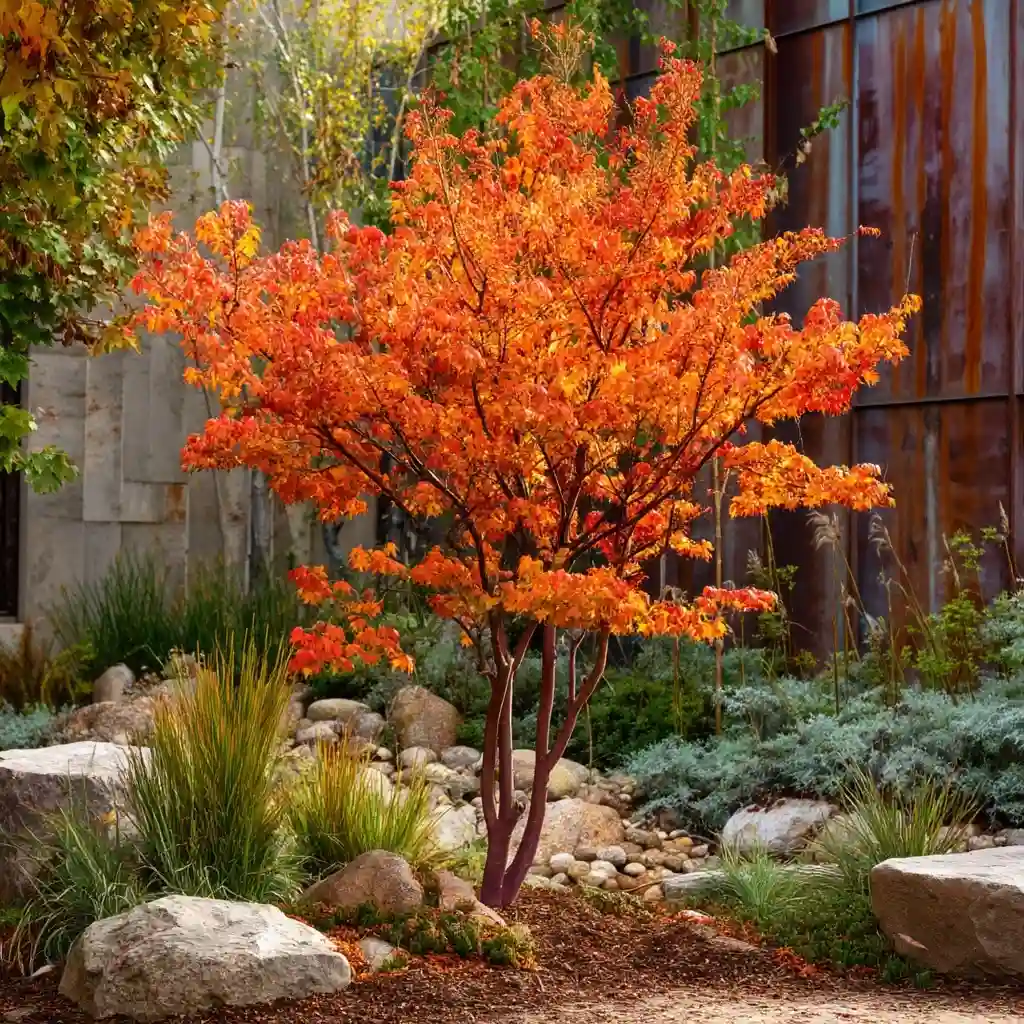
Paperbark Maple is a small but unforgettable standout among trees for fall foliage, offering rich coppery-red leaves in autumn and year-round interest thanks to its cinnamon-colored, peeling bark. Even after the leaves drop, the exfoliating bark continues to steal the show in winter landscapes.
Ideal for smaller yards or ornamental plantings, this slow-growing maple typically reaches 20–30 feet in height. Its compact size, along with its striking bark and glowing fall color, make it a perfect specimen tree for front yards, patios, or mixed borders.
Paperbark Maple is also appreciated for its hardiness and tolerance of different soil types, though it performs best in slightly acidic, well-drained soils with regular moisture.
Quick tips:
- USDA Zones: 4–8
- Best Location: Full sun to partial shade
- Soil Needs: Moist, well-drained, slightly acidic
If you’re looking for a tree that delivers fall brilliance in a smaller space—and adds texture and charm all year—Paperbark Maple is an exceptional choice.
11. American Beech (Fagus grandifolia)
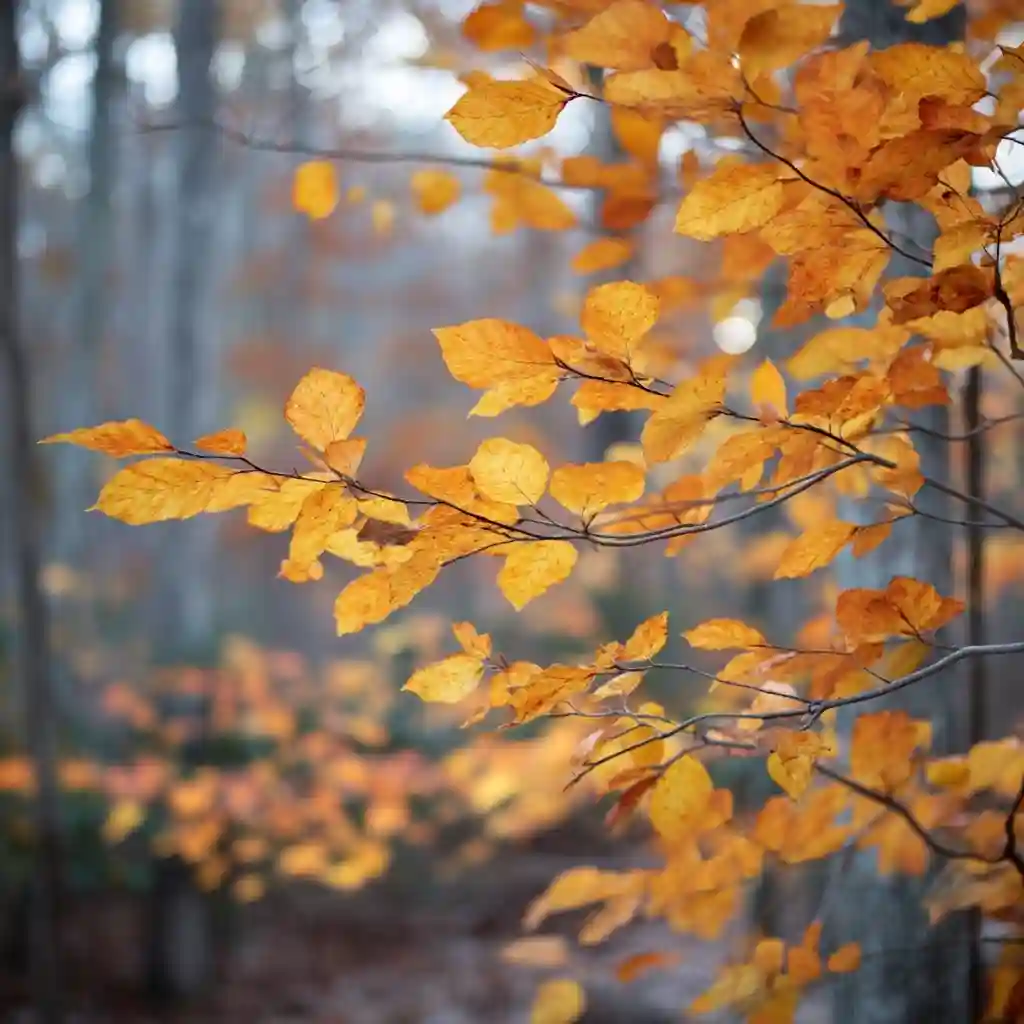
The American Beech is one of the most stately and elegant trees for fall foliage, offering rich golden-bronze leaves that glow in low autumn light. As the season progresses, the foliage may deepen into warm russet and copper tones, lingering longer than many other trees.
This tree is also admired for its smooth, silver-gray bark and strong, spreading branches. Even in winter, its bark and leaf-retaining habit (especially on younger trees) provide texture and structure to the landscape.
American Beech trees prefer large, open spaces and rich, well-drained soils. They can grow up to 80 feet tall, making them ideal for woodland edges, large yards, or parks. Their nuts (beechnuts) attract wildlife, offering an added benefit for naturalized landscapes.
Quick tips:
- USDA Zones: 3–9
- Best Location: Full sun to partial shade
- Soil Needs: Moist, well-drained, rich in organic matter
If you’re after a classic, long-lasting tree that combines beauty with wildlife value, the American Beech is a timeless favorite.
12. Japanese Stewartia (Stewartia pseudocamellia)
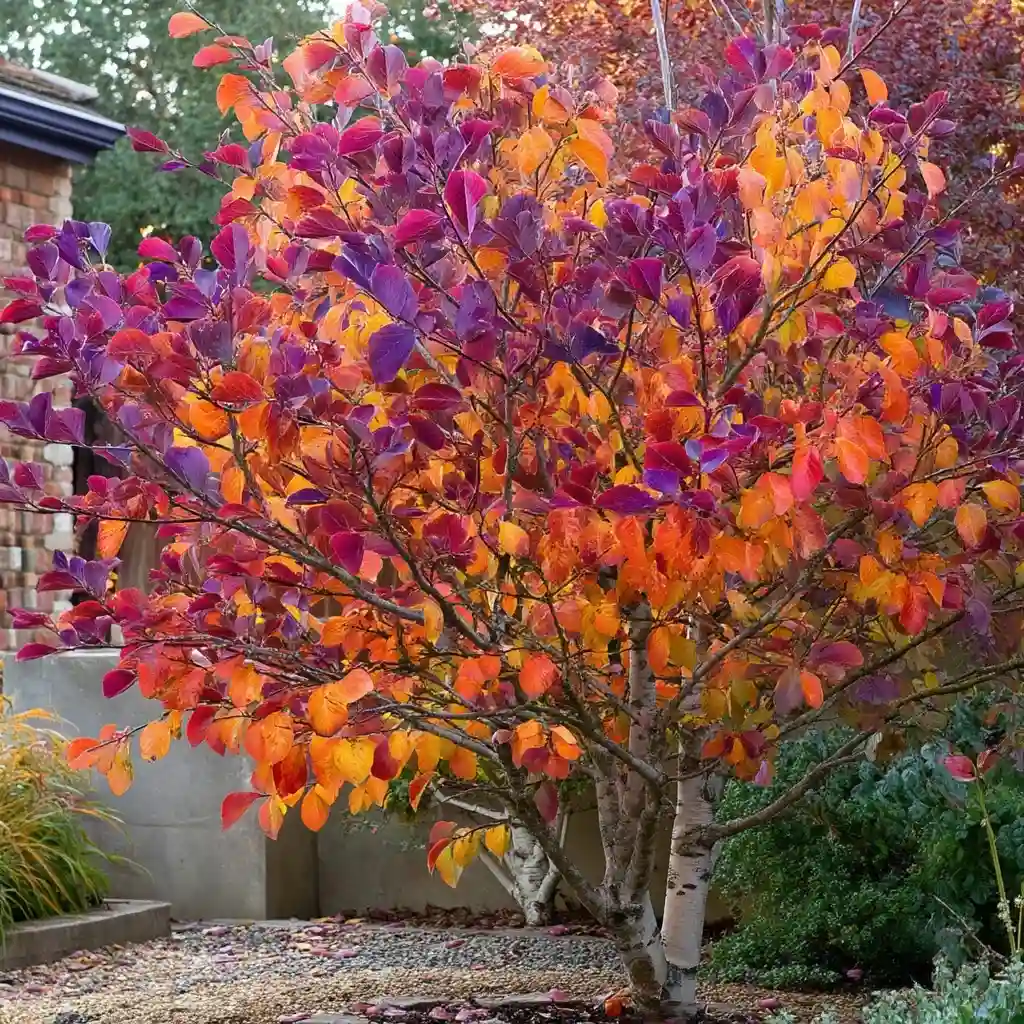
Elegant and underappreciated, Japanese Stewartia is a true gem among trees for fall foliage. In autumn, its finely textured leaves shift into a brilliant array of red, orange, and yellow—often blending beautifully on the same tree for a multicolored effect.
But the Stewartia’s appeal doesn’t end with fall. It also features stunning camellia-like white flowers in summer and exfoliating bark that reveals a patchwork of gray, brown, and orange tones in winter. This year-round beauty makes it a prized choice for ornamental plantings.
Typically reaching 20–40 feet in height, Japanese Stewartia is well-suited to smaller gardens and works wonderfully as a specimen tree in mixed borders or near patios. It thrives in acidic, well-drained soil and appreciates consistent moisture.
Quick tips:
- USDA Zones: 5–8
- Best Location: Partial shade to full sun (with protection from intense afternoon heat)
- Soil Needs: Moist, acidic, well-drained
For gardeners seeking refined beauty with multiseason interest, Japanese Stewartia is a spectacular and dependable performer.
13. Bald Cypress (Taxodium distichum)
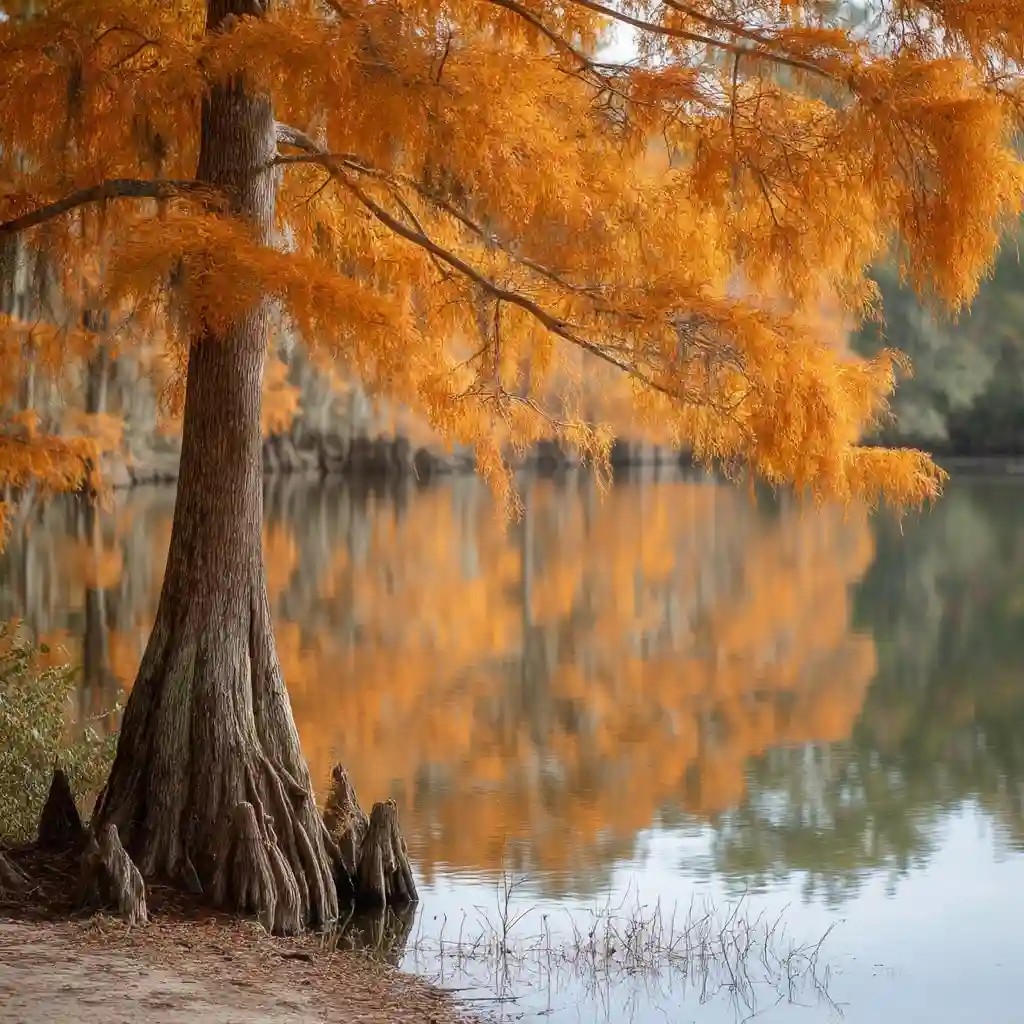
Although it’s a conifer, Bald Cypress stands out as one of the most unexpected and unique trees for fall foliage. Unlike most conifers, it’s deciduous—shedding its feathery needles in autumn after they turn a rich, warm copper or russet-orange.
Native to the southeastern U.S., Bald Cypress is most commonly seen in swampy or wet environments, often growing directly in water. However, it adapts well to drier soils, making it a surprisingly versatile option for home landscapes.
This tree’s tall, pyramidal form and distinctive flared trunk base (known as “buttressing”) give it architectural presence. In wetter areas, it may also produce knobby “knees” that rise from the ground or water surface—adding even more intrigue.
Quick tips:
- USDA Zones: 4–10
- Best Location: Full sun
- Soil Needs: Moist to wet; tolerates clay, sand, or loam
If you’re looking for a dramatic, low-maintenance tree with rich fall color and a touch of the unexpected, Bald Cypress is a bold and beautiful choice.
Conclusion
Choosing the right trees for fall foliage can turn your garden into a breathtaking seasonal showcase year after year. Whether you prefer the fiery reds of Red Maple, the elegant golden hues of American Beech, or the unusual copper tones of Bald Cypress, there’s a perfect fall-color tree for every landscape style and climate zone.
These 13 trees not only deliver stunning visual impact but also support biodiversity, enhance property value, and bring multi-season interest. As you plan your garden or landscape, consider the mature size, soil preferences, and sunlight needs of each tree to ensure long-term success.
For best results, pair fall foliage trees with complementary plants like evergreen shrubs or late-blooming perennials to create a well-balanced, year-round display.
FAQ
What is the best tree for fall color?
The Red Maple is widely regarded as one of the best trees for fall color due to its vibrant shades of scarlet and orange, fast growth, and adaptability. However, the best tree can vary based on your region and soil conditions.
Which trees have multi-colored fall foliage?
Black Gum, Sweet Gum, and Japanese Stewartia are known for showing multiple colors—like red, orange, and purple—on the same tree during fall, offering a truly dynamic display.
Are there any small trees for fall foliage?
Yes! The Paperbark Maple, Japanese Maple, and Japanese Stewartia are all excellent small to medium-sized trees that provide vibrant fall color without overwhelming your landscape.
Can I plant fall foliage trees in containers?
While most of these trees eventually grow too large for containers, compact varieties of Japanese Maple can be grown successfully in large pots, especially on patios or balconies.
Do these trees lose their leaves every year?
Yes, all the trees listed here are deciduous, meaning they lose their leaves each year in autumn after their vibrant fall display.
🌿 Love gardening inspiration? Follow me on Pinterest for bold plant ideas, tips, and seasonal color!
More Posts
